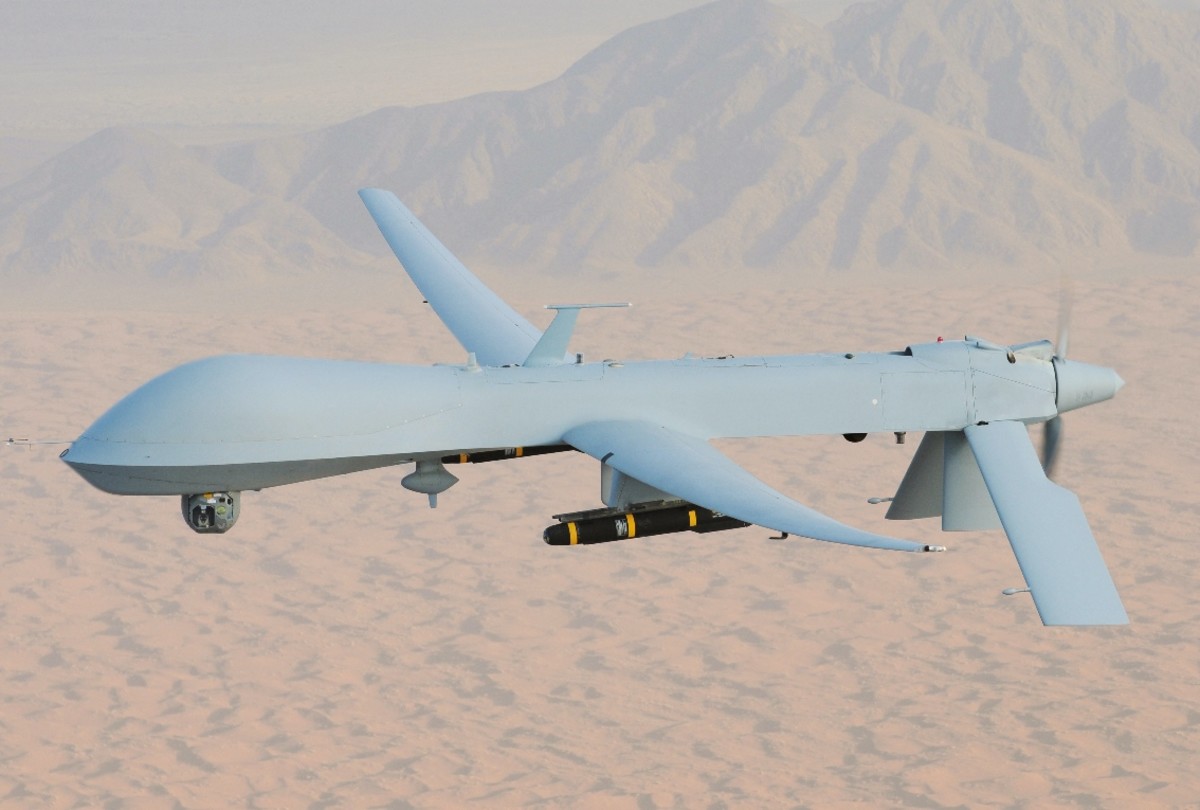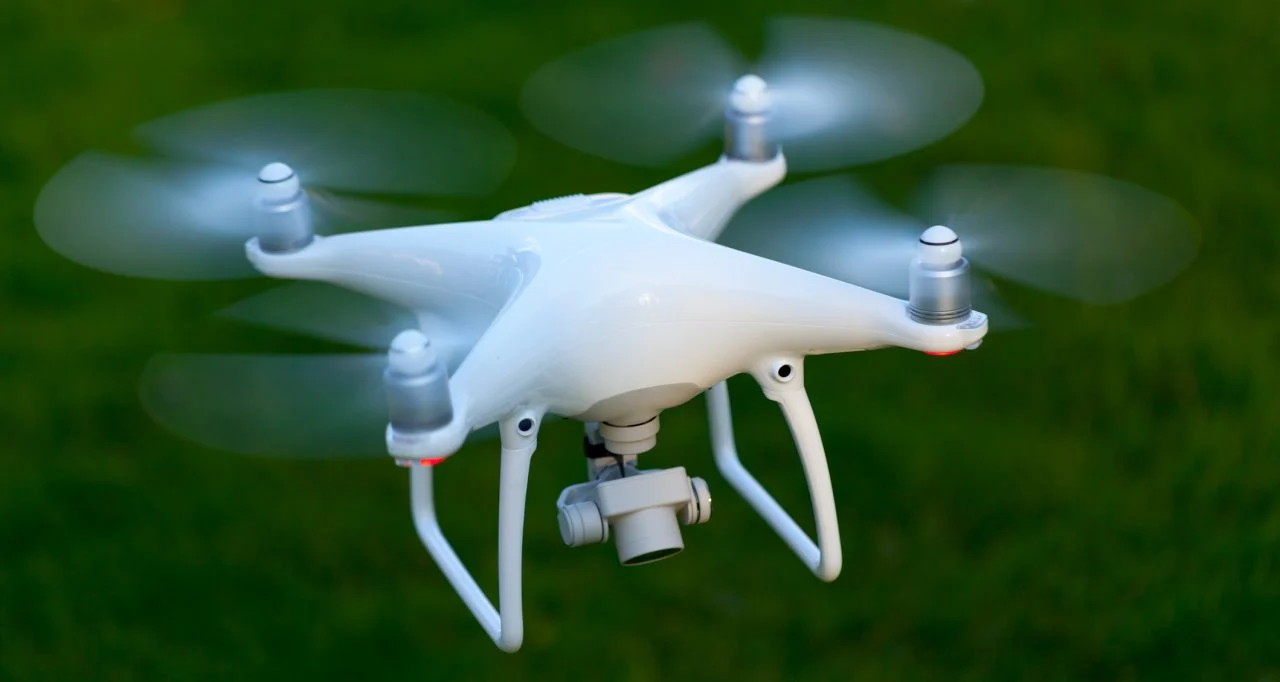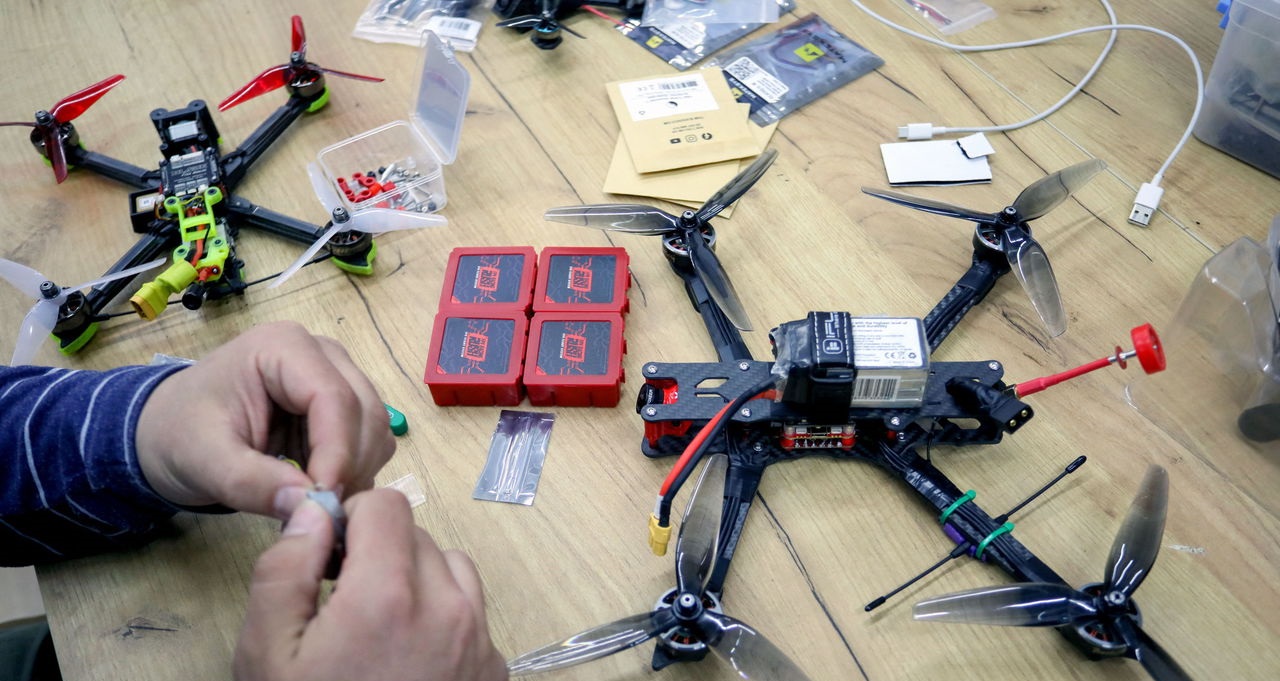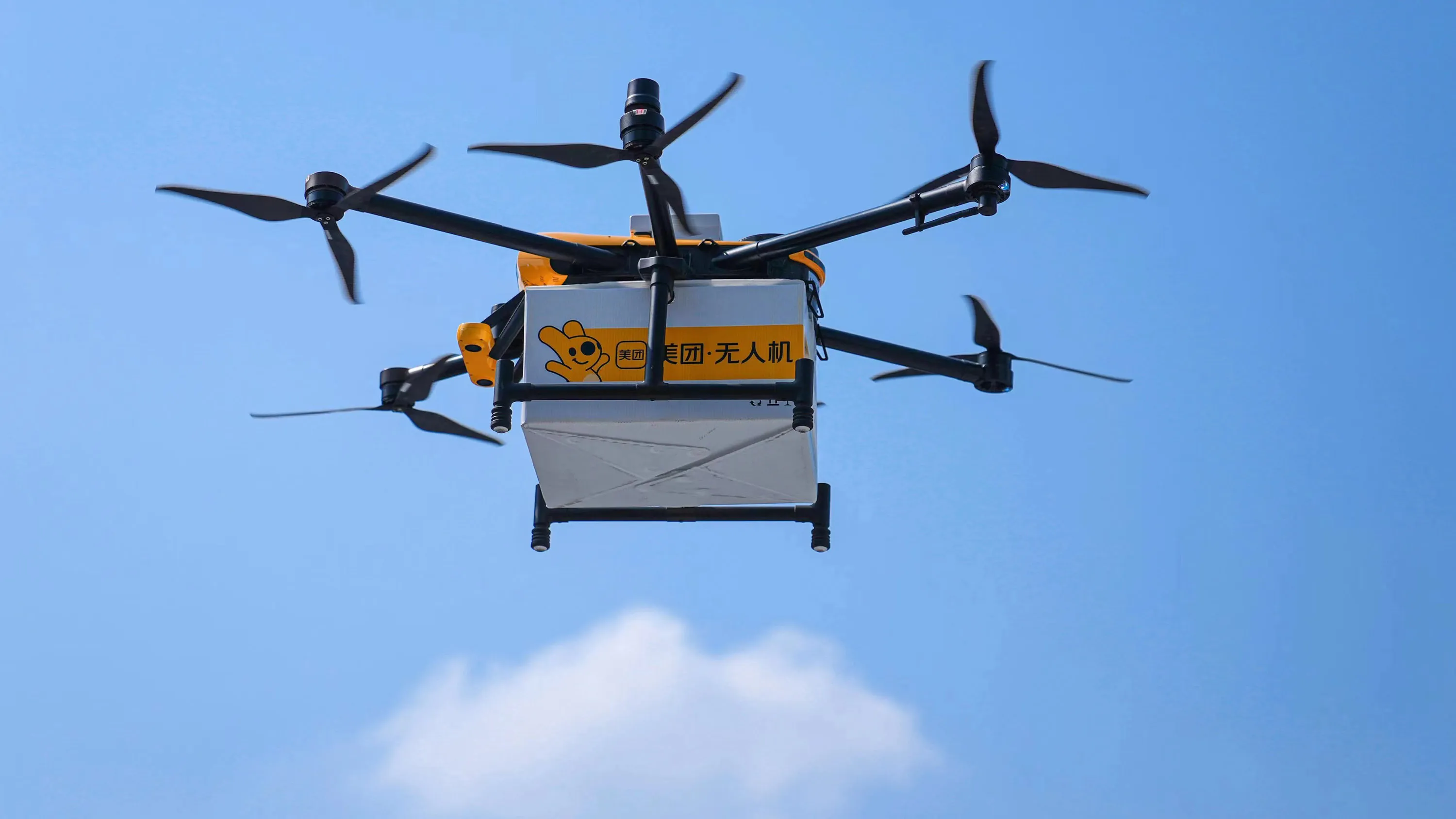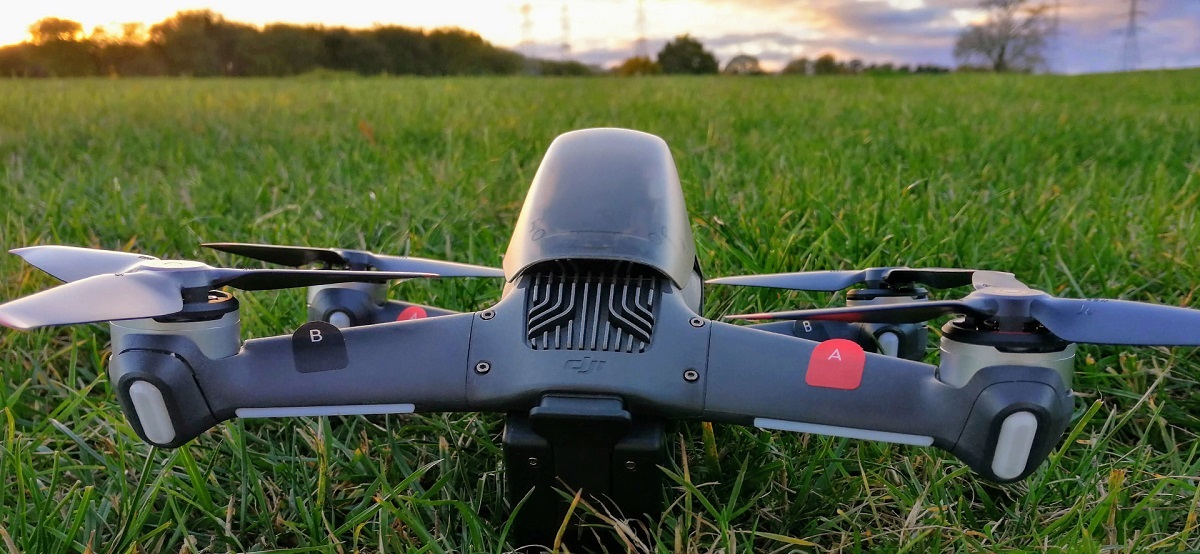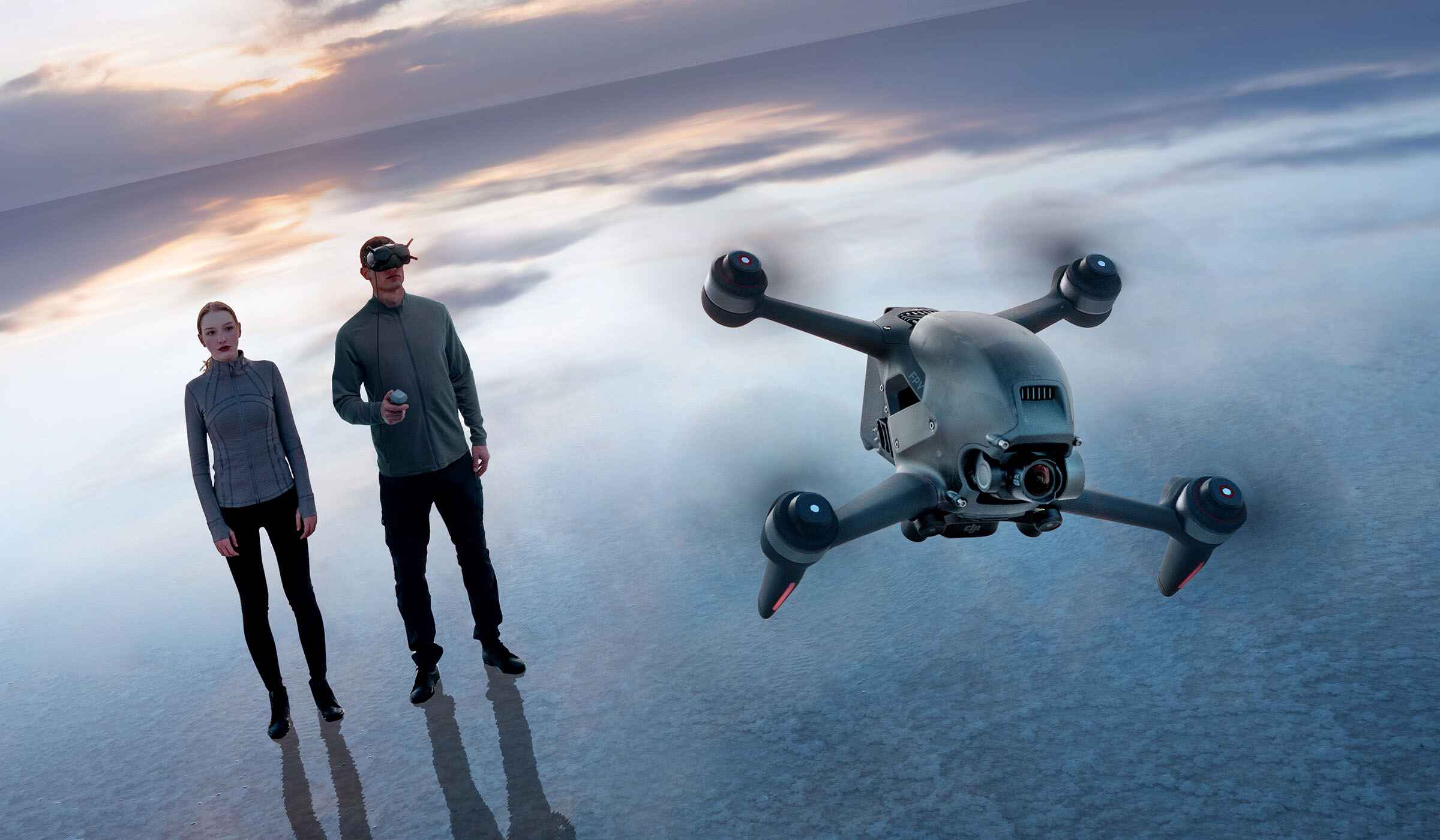Introduction
When it comes to drones, speed is a captivating aspect that fascinates both enthusiasts and professionals alike. The ability of a drone to soar through the skies at incredible velocities is not only exhilarating but also opens up a plethora of possibilities, from aerial photography and videography to racing competitions and more. But what exactly makes a drone fast? And what are the factors that determine its speed?
In this article, we will explore the world of fast drones, delving into the elements that contribute to their speed and uncovering some of the fastest drones ever built. We will also delve into the thrilling world of racing drones, where speed is a vital component and pushing the limits is the norm. Finally, we will look into the future of fast drones, discussing how technology advancements are set to redefine the limits of speed in unmanned aerial vehicles.
Whether you’re an avid drone enthusiast, a prospective racing drone pilot, or simply curious about the world of fast-moving aerial machines, join us as we embark on an exciting journey to uncover the secrets of the fastest drones in existence.
Understanding Speed in Drones
Speed is a fundamental characteristic of drones, determining how quickly they can travel from one point to another. In the context of drones, speed refers to the maximum velocity at which the aircraft can fly.
There are various factors that contribute to the speed of a drone. One of the most important factors is the power of its propulsion system. Drones typically use electric motors or, in some cases, combustion engines to generate thrust. The more powerful the motors, the faster the drone can fly. Additionally, the design of the drone’s aerodynamics plays a crucial role in its speed. Drones with sleek, streamlined designs can cut through the air with minimal drag, allowing them to reach higher speeds.
Another key factor is the weight of the drone. Lighter drones tend to have better acceleration and can achieve higher speeds. This is because a lighter drone requires less power to overcome its own weight, allowing more power to be dedicated to propulsion. However, it’s important to maintain a balance between weight and structural integrity to ensure the drone remains stable during flight.
The battery life of a drone also impacts its speed. Drones with longer battery life can sustain high speeds for a longer duration, while drones with shorter battery life may experience a decrease in speed as the battery drains. It’s crucial for drone pilots to consider battery life when aiming for maximum speed.
Furthermore, the software and flight control system of a drone play a significant role in determining its speed. Advanced flight controllers can optimize the drone’s performance, allowing it to reach its maximum speed potential. These flight controllers regulate the power output, stability, and responsiveness of the drone, ensuring optimal performance during flight.
While understanding these factors is important, it’s essential to note that speed is not the sole characteristic that defines the capabilities of a drone. Factors such as maneuverability, stability, and payload capacity are equally important, depending on the intended use of the drone.
Now that we have a better understanding of the factors that influence drone speed, let’s dive into the world of fast drones and explore some of the fastest models ever created.
Factors Affecting Drone Speed
Several crucial elements influence the speed capabilities of drones. Understanding these factors can help drone enthusiasts make informed decisions when selecting a fast and agile aircraft.
1. Powerful Motors: The type and power of the motors installed in a drone greatly impact its speed. Brushless motors are often preferred due to their efficiency, reliability, and ability to generate high thrust-to-weight ratios. The higher the power of the motors, the faster the drone can fly.
2. Aerodynamics: The design and shape of a drone determine its aerodynamic performance. A sleek and streamlined design reduces drag, allowing the drone to cut through the air more efficiently. This enhances its speed and maneuverability. Additionally, the placement of the propellers, arms, and fuselage greatly affects the drone’s overall aerodynamics.
3. Weight: The weight of the drone is a critical factor when it comes to speed. Lighter drones typically have better acceleration and can achieve higher top speeds. To keep the weight down, manufacturers use lightweight materials such as carbon fiber and high-quality plastics. However, it is important to strike a balance between weight and structural integrity to ensure the durability of the drone.
4. Battery Life: The battery life of a drone directly affects its speed and endurance. Drones with longer flight times can maintain high speeds for a more extended period. It is essential to choose a drone with sufficient battery capacity to match your speed requirements.
5. Flight Controller: The flight controller is the brain of the drone, responsible for control and stabilization during flight. Advanced flight controllers can optimize the drone’s performance, leading to enhanced speed and responsiveness. These controllers utilize algorithms to regulate power output, stability, and flight patterns, maximizing the drone’s potential for high speeds.
6. Propeller Design: The design, size, and pitch of the propellers have a significant impact on a drone’s speed and efficiency. Propellers with a higher pitch generate more thrust, allowing the drone to accelerate faster. However, high-pitched propellers may require more power and can reduce overall flight time.
7. Wind Conditions: Wind speed and direction can greatly affect a drone’s speed. Tailwinds can provide an additional boost, enabling the drone to fly faster, while headwinds can have the opposite effect. It’s important to consider wind conditions when aiming for maximum speed.
By considering these factors, drone enthusiasts can make informed decisions when selecting a drone that meets their speed requirements. The combination of powerful motors, aerodynamic design, lightweight construction, sufficient battery life, advanced flight controllers, optimal propeller design, and favorable wind conditions all contribute to achieving impressive speeds in drones.
The World’s Fastest Drones
The quest for speed has led to the development of some astonishingly fast drones that push the boundaries of what is possible in unmanned aerial vehicles. Let’s explore some of the fastest drones in the world:
1. DRL RacerX: Holding the Guinness World Record for the fastest drone, the DRL RacerX has been clocked at an incredible speed of 179.6 miles per hour (289 kilometers per hour). Built for racing, this drone combines a lightweight carbon fiber frame with exceptionally powerful motors to achieve mind-boggling speeds.
2. AeroVironment Nano Hummingbird: This tiny drone, resembling a hummingbird, was designed for military surveillance. While not as fast as the DRL RacerX, it still boasts an impressive top speed of 11 miles per hour (18 kilometers per hour). What sets it apart is its agility and ability to hover and maneuver in tight spaces.
3. Yuneec Typhoon H Pro: While primarily known for consumer drones, Yuneec has also ventured into racing with their Typhoon H Pro model. Equipped with high-performance motors and aerodynamic design, this drone can reach speeds of up to 70 miles per hour (113 kilometers per hour).
4. Autel Robotics X-Star Premium: Another drone known for its speed and performance is the Autel Robotics X-Star Premium. With a top speed of 36 miles per hour (58 kilometers per hour) and a sleek, streamlined design, it offers an exhilarating flying experience for both recreational and professional pilots.
5. DJI Inspire 2: While DJI is renowned for its camera drones, the Inspire 2 model also impresses with its speed capabilities. It can reach speeds of up to 58 miles per hour (94 kilometers per hour) and is equipped with advanced flight features, making it a versatile and fast drone for aerial photography and videography.
These are just a few examples of the fastest drones in the world. As technology continues to advance, we can expect even faster and more innovative drones to be developed, pushing the limits of speed and performance.
Whether you’re a racing enthusiast looking for an adrenaline-fueled experience or a professional seeking high-speed aerial capabilities, these drones offer a glimpse into the thrilling world of speed in unmanned aerial vehicles.
Racing Drones: The Need for Speed
Racing drones have gained immense popularity in recent years, captivating enthusiasts around the world with their thrilling and high-speed competitions. These events showcase the incredible agility and speed capabilities of these unmanned aerial vehicles. But what drives the fascination for racing drones and the need for speed?
One of the main attractions of racing drones is the adrenaline rush they provide. Pilots navigate their drones through challenging courses, pushing their limits and showcasing their skills in high-speed maneuvers. The intensity and speed of these races create an exhilarating experience for both pilots and spectators.
Speed is a critical component in racing drones. The faster the drone, the quicker it can complete laps and overtake competitors. Pilots strive to optimize their drones for speed by focusing on lightweight designs, powerful motors, and efficient propulsion systems. Every gram saved and every extra mile per hour achieved can make a significant difference on the race track.
Racing drones require precise control, agility, and responsiveness, all of which are enhanced by speed. Pilots must navigate tight turns, narrow gaps, and intricate obstacle courses, requiring split-second decisions and lightning-fast reflexes. The need for speed places a premium on the pilot’s ability to anticipate and react swiftly to changing race conditions.
Additionally, racing drones have paved the way for technological advancements in the drone industry. The rapid development and innovation driven by competitive racing have led to improvements in flight controllers, motor technology, battery efficiency, and overall drone performance. These advancements not only benefit racing enthusiasts but also have broader applications in fields such as cinematography, aerial inspections, and search and rescue operations.
Racing has also created a passionate community of drone enthusiasts who share their knowledge, experiences, and excitement for speed. This community fosters collaboration, friendly competition, and the exchange of ideas, creating a vibrant and supportive ecosystem for drone racing.
As drone racing continues to gain traction, events such as the Drone Racing League (DRL) and World Drone Prix attract top pilots from around the globe, showcasing the incredible speed and skill on display. Spectators, both in person and through live streams, are captivated by the high-speed action, creating a growing fanbase for this exhilarating sport.
The need for speed in racing drones goes beyond pure entertainment. It pushes the boundaries of technology, encourages innovation, and brings together a passionate community. As racing drone technology continues to evolve, we can expect to see even faster, more agile, and thrilling competitions in the future.
The Future of Fast Drones
The world of fast drones is constantly evolving, driven by advancements in technology and the desire for more speed. As we look to the future, we can expect exciting developments and innovations that will redefine the limits of speed in unmanned aerial vehicles.
One area of focus for the future of fast drones is the improvement of propulsion systems. Manufacturers are continually exploring new motor technologies, such as brushless and coreless motors, that offer higher power-to-weight ratios and greater efficiency. These advancements will allow drones to achieve even faster speeds while maintaining longer flight times.
Advancements in battery technology will also play a crucial role in the future of fast drones. Longer-lasting, lightweight batteries with faster charging times will enable drones to sustain high speeds for extended periods. This will open up new possibilities for longer-range flights and more prolonged racing competitions.
Additionally, advancements in aerodynamics and materials will contribute to the speed capabilities of future drones. Sleek and streamlined designs, combined with lightweight yet sturdy materials, will reduce drag and improve overall efficiency. This will result in faster and more nimble drones that can achieve incredible speeds without sacrificing stability.
The integration of artificial intelligence (AI) and machine learning algorithms will also shape the future of fast drones. These technologies can optimize flight patterns, predict obstacles, and enhance overall performance. AI-powered drones will be able to adapt and make split-second decisions, allowing for faster and more precise maneuvers.
The potential for autonomous racing is another exciting aspect of the future of fast drones. Developments in computer vision and sensor technology will enable drones to autonomously navigate complex race courses at high speeds, without the need for human pilots. This opens up possibilities for new racing formats and the exploration of entirely new levels of speed and performance.
Moreover, the implementation of 5G connectivity will have a significant impact on the future of fast drones. With faster and more reliable communication networks, drones will be able to transmit data in real-time, enhancing their speed and responsiveness. This not only applies to racing drones but also to drones used in various industries, such as search and rescue missions or aerial inspections.
As these advancements unfold, fast drones will continue to push the boundaries of what is possible in aerial technology. We can anticipate faster speeds, increased agility, longer flight times, and more intuitive controls. The future holds incredible promise for fast drones, showcasing their versatility and opening up new opportunities in fields ranging from entertainment and sports to commercial and industrial applications.
Conclusion
Speed is a defining characteristic of drones, captivating both enthusiasts and professionals alike. Understanding the factors that contribute to drone speed, such as powerful motors, aerodynamic designs, weight considerations, battery life, flight controllers, propeller design, and wind conditions, allows us to appreciate the complexity behind achieving high velocities in these unmanned aerial vehicles.
The world of fast drones continues to evolve, with technological advancements pushing the boundaries of speed and performance. The development of faster motors, lightweight materials, efficient propulsion systems, and advanced flight controllers are all contributing to the creation of drones that can achieve astonishing speeds. Additionally, the quest for speed in racing drones has sparked innovation in the drone industry, leading to breakthroughs in technology that benefit various applications beyond racing.
Looking to the future, we can anticipate even greater advancements in the world of fast drones. Improvements in propulsion systems, battery technology, aerodynamics, AI, and connectivity will redefine the limits of speed and unleash new possibilities in various sectors. Autonomous drone races, enhanced control systems, and real-time data transmission are just a few examples of the exciting developments that lie ahead.
Whether it’s the thrill of racing, the awe-inspiring aerial maneuvers, or the application of fast drones in commercial and industrial fields, the pursuit of speed in unmanned aerial vehicles continues to capture our imaginations. As technology continues to progress, the world of fast drones will undoubtedly keep pushing boundaries, revolutionizing the way we explore the skies and unlocking new possibilities for the future.









